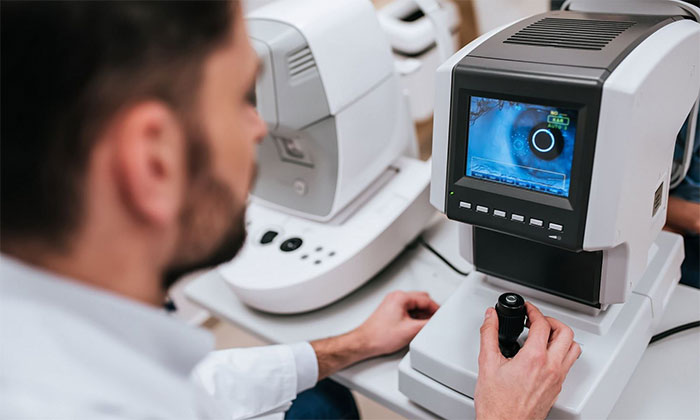Researchers believe that in the future, retinal scans may be used to calculate a person’s risk of mortality.
According to Dailymail, researchers assert that the retina acts as a window, allowing doctors to gain deeper insights into an individual’s health.
Australian scientists suggest that the greater the retinal age gap, the higher the risk of mortality.

Retinal biological age can be calculated using an AI program. (Illustrative image: Shutterstock).
The retinal age gap refers to the difference between a person’s chronological age and the estimated biological age of their retina.
Retinal biological age can be calculated using an artificial intelligence program that analyzes images of the retina, specifically the inner back surface of the eye. Some ophthalmologists offer this eye scanning service.
According to Australian experts who monitored volunteers for 11 years, individuals with a 10-year gap between their chronological age and retinal biological age have a 67% higher risk of mortality.
The researchers calculated that for every year of difference, the risk of mortality increases by 2%.
Scholars at the Melbourne Eye Research Centre trained an AI algorithm to predict retinal age using 19,000 retinal scan images. The program’s estimates were found to be accurate.
Subsequently, the research team assessed the retinal age gap of 36,000 participants drawn from the UK Biobank.
The retina of more than half of the retired individuals was at least three years older than their actual biological age. Some individuals had retinas that were over a decade older.
They then combined this data with health information from participants over an average of 11 years, linking causes of death to the retinal age gap.
During this period, 1,800 (5%) participants died, with the majority succumbing to cancer, dementia, or heart disease.
An older retinal age is associated with a 49-67% higher risk of mortality from causes other than heart disease or cancer.
The researchers also conducted a similar study using images of the retina taken from the left eye, yielding similar results.
Dr. Lisa Zhuoting Zhu, one of the study’s authors, stated: “These findings suggest that retinal age could be an important clinical biomarker of the aging process. The retina is the only accessible ‘window’ to assess the underlying pathological processes of systemic vascular and neurological diseases associated with increased mortality risk.”
This hypothesis is supported by previous studies, which suggested that retinal images contain information about cardiovascular risk factors, chronic kidney disease, and systemic biological characteristics.
Retinal scans have previously been used to detect several warning signs of cardiovascular disease.


















































